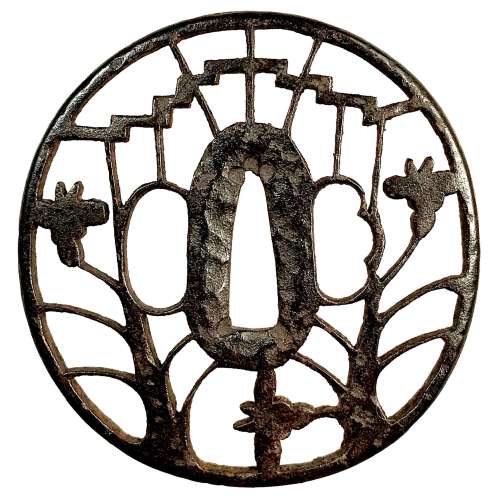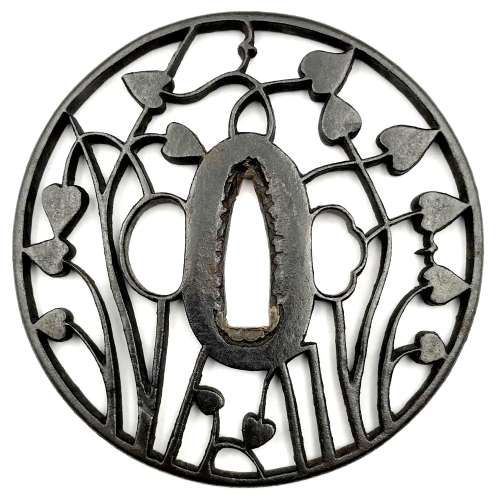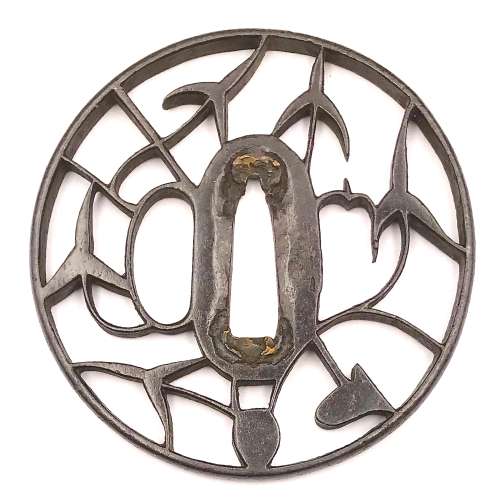Kyo school iron tsuba of round form decorated with an eight-plank bridge (yatsuhashi) and irises (kakitsubata) in openwork (sukashi).
Late Muromachi period, Tenbun era (early 16th centiry).Dimensions: 80.0 x 77.2 x 4.1 mm.
The design alludes to the scene in 'Ise Monogatari', where Ariwara no Narihira being exiled from Kyoto to the Kanto region crossed the eight-plank bridge at Mikawa looking at the irises in bloom and composed a poem expressing his desire to return to Kyoto. A lot of tsuba have been produced with the similar design.
Reference: Masterpieces from the Sasano collection, 1994, p. 98, №69.




